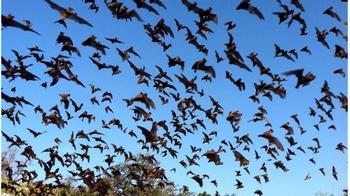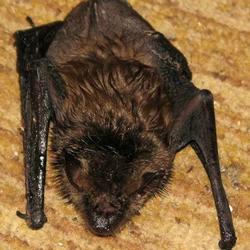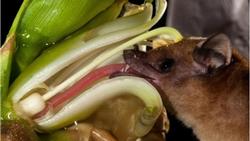Invite a Bat to Your Garden and Ditch that Mosquito Spray!

While not likely to win awards for cuteness, these shy, gentle, and intelligent little creatures belong to the family Chiroptera, meaning “hand-wing.” The flexible wing structure is much like a human arm and hand, except it has a thin membrane of skin extending between the “hand” and the body, and between each finger bone. The “thumb” extends out of the wing as a small claw, which bats use to climb up trees and other structures.
"Blind as a bat" is strictly a myth. They can see just fine, though their dominant navigational method, like dolphins, is echolocation, sending out beeps and analyzing the echoes that come bouncing back. With this finely honed ability, they can detect obstacles as fine as a human hair in total darkness.
Numerous species

Big bat appetites provide significant pest control
More than two-thirds of bat species have extraordinary appetites for nocturnal insects like moths, gnats, beetles, and crickets. A single little brown bat consumes up to a thousand mosquito-sized insects in a single hour, while a nursing mother will devour the equivalent of her body weight each night. The world's largest colony of bats lives in Bracken Cave, Texas, where 20 million Mexican free-tailed bats emerge at dusk like a river of wings to devour up to 200 tons of insects on a single summer's night. That's a lot of natural pest control!
Bats fly from half a mile to six miles from their roost to a feeding site, using temporary roost sites there until returning to their main roost. Some bats are flower feeders, offering their pollinator services as they feast. One species loves agave and pollinates the plant that gives us tequila. Fruit-eating bats disperse seeds and help with reforestation.
And vampire bats? There are three species, all living in Latin America, that feed on the blood of cattle, horses, and wild mammals. They don’t suck blood Dracula-style; after finding a thin-skinned spot on the animal, they make a small incision and lap it up like kittens do milk.
Long life
Bats live five to 30 years depending on the species. They’re about the slowest mammals to reproduce for their size, and usually produce only a single pup. At birth, the baby bat weighs about a quarter of the mother’s weight, and is cared for in maternity colonies where females congregate to bear and raise their young.
Bats face environmental challenges
Bats have been negatively affected by loss of habitat, disturbance of roosting locations, climate change, and the decline of insects due to overuse of pesticides. A disease called white-nose syndrome (WNS) is wiping out millions of bats across the country. The pathogen is a fungus that infects bats during the cooler months in hibernation, rousing them early so they use their stored fat prematurely and die of starvation in the spring. While WNS has recently been detected in Northern California, it has not yet been detected in Marin County.
A consortium of agencies working together as the Marin County Bat Monitoring Project is gathering information about Marin County bats. Led by the U.S. Geological Survey along with Point Reyes National Seashore, One Tam is studying where Marin's 13 bat species roost, if and when they hibernate, where they hunt, and what influences put them at risk. Using lightweight mist nets, the scientists capture bats and fit them with radio tags for tracking.
How to invite bats to your garden
Bats are gardeners' friends. Here's how to invite them:
- Fill your garden with flowers and herbs, particularly those that bloom and are fragrant at night. Night bloomers include Datura, four-o’clock (Mirabilis), Yucca, evening primrose (Oenothera biennis), night-blooming water lily (Nymphaea), night-blooming jessamine (Cestrum nocturnum), Cleome, and Nicotiana.
- Provide a water source such as a pond or fountain.
- Provide natural bat habitats such as tree hollows and crevices, loose bark, and palm trees.
- Build a bat house in an isolated area in your garden.
- Avoid pesticides to promote a robust insect community.
Welcome bats to your garden, but exclude them from your roof!!!

The most effective technique to eliminate bat visitors is exclusion, which may involve a system of narrowing tubes attached to the entrance and exit that allows bats to leave your home but not re-enter. Repair and caulk any openings larger than one-quarter inch to keep them out. Learn more.
Generally, sick bats will be on the ground. Do not pick one up or handle it. For assistance, contact WildCare in San Rafael at 415-456-SAVE (7283).
Some summer evening, find a spot in the garden right after sunset, and for the next hour, watch for these shy little critters swooping about in search of a meal. With a little information and understanding, you can protect a piece of their habitat right in your own backyard and reap the benefits.
